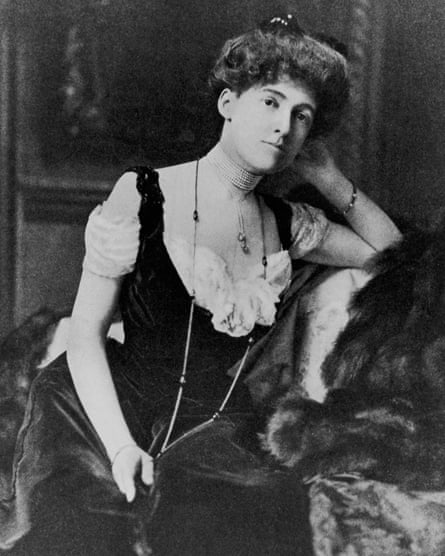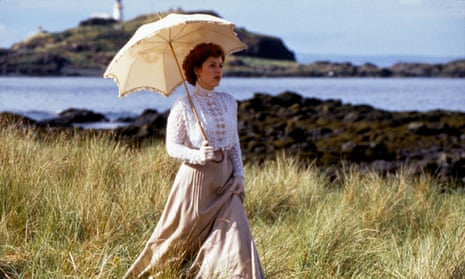The House of Mirth was the first literary classic that I picked up entirely on my own, without prodding from a teacher or a parent, and adored. I read it as a teenager, during a stifling summer visit to my grandparents, when my literary tastes were unsophisticated (Archie comics were high on my list). I recall the experience as my coming of age as a reader – when I learned, years before discovering that I wanted to write, what transformative power a work of fiction can have.
Because my attachment to the book is so personal, I tend to reread it with slight trepidation that the magic may have fled. After all, the world and I have both changed quite a bit since I was a teenager. But each time, I find the novel’s tragic power intact, even as the nature of the tragedy seems to shift – from the perils of living by one’s looks (teenage reading) to the cruelty of the world towards women (early adult reading) to the struggle for personal freedom in a money-obsessed culture (adult reading) to my most recent (middle-aged, I’ll reluctantly call it) appreciation of the novel as an artefact of the Gilded Age that lays bare that era’s pathologies. All of which moves me to assert that Edith Wharton’s second novel is a masterpiece that remains electrifying and relevant in our 21st century.
On its surface, The House of Mirth reads like a 19th-century novel. Although the 20th century’s defining technologies had all been invented by the time it was published in 1905, they had yet to substantially alter even the affluent world of the novel’s protagonist, Lily Bart. Cars were exotic playthings; telephones hadn’t supplanted visiting cards; electric light was a harsher alternative to candles. The first world war was inconceivable. And there is, too, a lingering 19th-century feel to Wharton’s disembodied approach to human physicality – especially striking in a novel whose central conundrum is sexual: Lily, a pedigreed virgin without fortune, craves the sensual pleasures of life among the very rich but cannot bring herself to marry a wealthy man, her only means of securing those pleasures for life.
Where The House of Mirth is decidedly 20th century is in its frank depiction of the changing sexual mores around the behaviour of married women. Wives have begun to divorce their husbands. And married women like Lily’s nemesis, Bertha Dorset, can commit serial adultery with impunity so long as their husbands don’t make a fuss. Wharton lays out this rule explicitly: “The code of Lily’s world decreed that a woman’s husband should be the only judge of her conduct; she was technically above suspicion while she had the shelter of his approval, or even of his indifference.”
Here we have the moral double standard at the crux of The House of Mirth: sexual deception is rewarded, while virginity remains a volatile property, inciting suspicion. Reactions to its publication support the novel’s indictment of this paradox; according to Hermione Lee’s superb biography of Wharton, what most scandalised contemporary readers was not Bertha’s adultery, but the fact that Lily goes alone to the apartment of a bachelor, Lawrence Selden, to drink tea!
Like her protagonist, Wharton was born into upper crust New York and coerced by her overbearing mother to choose a husband from within its ranks. In her autobiography, A Backward Glance, she celebrates the passion shared with her husband for travel and dogs. But she never mentions Teddy Wharton’s bouts of depression or the fact that her own romantic life had moved outside the marriage before she finally divorced him after 28 years.
Wharton had already written books including a novel set in 18th-century Italy and a volume on interior design when she began drafting a novel set in the rarefied world of moneyed New York. The challenge, she recalls in A Backward Glance, was to find the gravitas in such a world. “The answer was that a frivolous society can acquire dramatic significance only through what its frivolity destroys. Its tragic implication lies in its power of debasing people and ideals. The answer, in short, was my heroine, Lily Bart.”
Wharton intended to serialise her new book in Scribner’s magazine. She recalled: “But no date had been fixed for its delivery, and between my critical dissatisfaction with the work and the distractions of a busy and hospitable life, full of friends and travel, reading and gardening, I had let the months drift by without really tackling my new subject.”

When another book fell through at Scribner’s, Wharton pledged The House of Mirth to fill the empty slot, and its first chapters were rushed into print before she had finished the rest. “It was good to be turned from a drifting amateur into a professional,” she wrote of the experience. “But that was nothing compared to the effect on my imagination of systematic daily effort.” Published when she was 43, The House of Mirth did more than presage Wharton’s disciplined productivity for the remainder of her life; it became a bestseller and made her famous.
The Gilded Age of the late 19th century saw a widening income gap that is often compared with our own era. One would never mistake the rich industrialists and bankers in The House of Mirth for the landed gentry of Trollope’s 19th century; what counts for a gentleman in this New World is Percy Gryce, the dullard Lily nearly marries early in the novel, whose father invented “a patent device for excluding fresh air from hotels”. Even the richest men are mostly hard at work; as Gus Trenor, the brutish husband of a lavish hostess, puts it: “You don’t know how a fellow has to hustle to keep this kind of thing going.”
A gossamer veil separates the illusion of floating beauty that suffuses the luxury of Lily’s world from the human toil required, at every level, to create and sustain it. Book one of The House of Mirth leaves that veil undisturbed except for occasional glimpses of what lies across it; the charwoman, who later returns to blackmail Lily; the charitable projects of her childhood friend Gerty Farish, who, though physically plain, is, like Lily, pedigreed, poor and in love with Lawrence – and thus a narrative foil for her. And there is Simon Rosedale, an ultra-wealthy financier and interloper into Lily’s world, described in antisemitic terms that are a blot on the novel and might have been fatal to it, were he not one of its most nuanced and sympathetic characters.
Lily has no wish to look across that veil; even when she gives money to Gerty’s needy girls (having taken it, fatally, from Gus Trenor), she does so mostly for the narcissistic pleasure of feeling philanthropic. Yet something of the instability – and hidden brutality – that underlies her languid, moneyed cohort keeps invading Lily’s vision of it.
Sometimes, as at the Trenors, Lily’s companions seem more than worthy of her aspirations: “She liked their elegance, their lightness … They were lords of the only world she cared for, and they were ready to admit her to their ranks and let her lord it with them.” But by dinnertime, stealing allegiance has turned to revulsion. “That very afternoon they had seemed full of brilliant qualities; now she saw that they were merely dull in a loud way. Under the glitter of their opportunities she saw the poverty of their achievement.”
The catalyst for this reversal of perspective is Lawrence’s arrival. Like the work of the modernists Wharton anticipates, The House of Mirth embraces the notion of reality as a landscape shaped by consciousness. What destroys Lily is not so much the frivolity of her world as her own inability to commit to that frivolity – or else to break away. In a narrow-minded society, her resistance to marriage will ultimately be seen as a threat. This, too, she understands, and her failures induce bouts of melancholy that Wharton identifies, tellingly, as depression.
Lily’s wobbling perspective and unwillingness to play by the rules of her set finally result in social expulsion. Now her downward spiral accelerates, for, being undisciplined, unskilled and unable to sleep without narcotics, she is even less equipped to thrive as a trimmer of ladies’ hats than she was as the lady who wore them. Alone and exhausted, she finds herself on a bench in Bryant Park after dark. There, she is recognised and scooped up by Nettie Struther, a girl Lily once helped, through Gerty, to recover from tuberculosis by paying for her stay in a sanatorium. Nettie coaxes Lily to the tenement apartment where she and her husband live with their newborn.
Comforted by Nettie’s proximity, Lily sees the “dingy” circumstances she has always dreaded transformed into an orb of warmth, gentleness and physical love. She is aware of having had a revelation – discovering a “central truth of existence” that had been absent from the mannered, childless realm where she has passed her life: “All the men and women she knew were like atoms whirling away from each other in some wild centrifugal dance: her first glimpse of the continuity of life had come to her that evening in Nettie’s kitchen.” The revelation comes too late, Lily believes, to save her from poverty and solitude. Yet as she drifts into her final sleep, having overdosed – accidentally or intentionally, it’s not clear – she cradles an imaginary infant in her arms with a tender joy that implies redemption.
What form that redemption will take is ambiguous, but I have a theory: Lawrence, arriving the next morning at Lily’s boarding house, finds Gerty calmly and expertly managing the scene of Lily’s self-destruction. In these dire circumstances, Lawrence sees his plain cousin anew. “He stood up, and as their eyes met, he was struck by the extraordinary light in his cousin’s face.” Gerty has always loved Lawrence, and there is the hint that with her, he might at last break free of the arid parlour games that kept him from Lily, and partake, in Lily’s aftermath, of her revelation.
That’s one interpretation, but there are infinite others – of those scenes, and of the novel as a whole. Fiction is the dream life of the culture that makes it, and its enduring mysteries are what keep us coming back. More than a century after Wharton published The House of Mirth, the novel’s power remains, for this reader, eternal.
